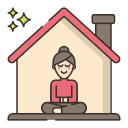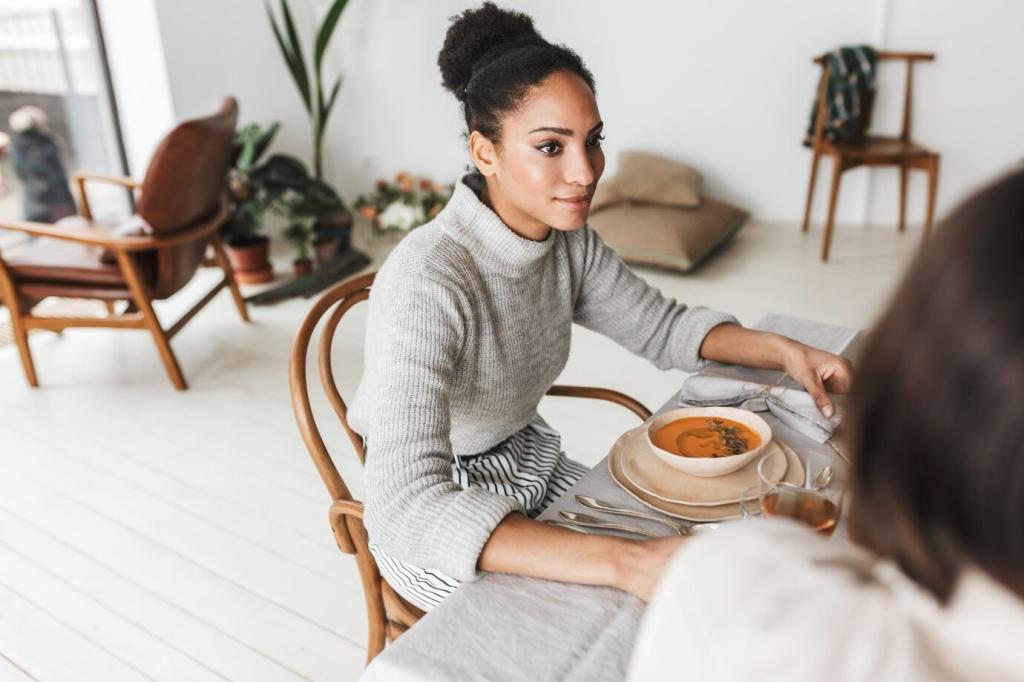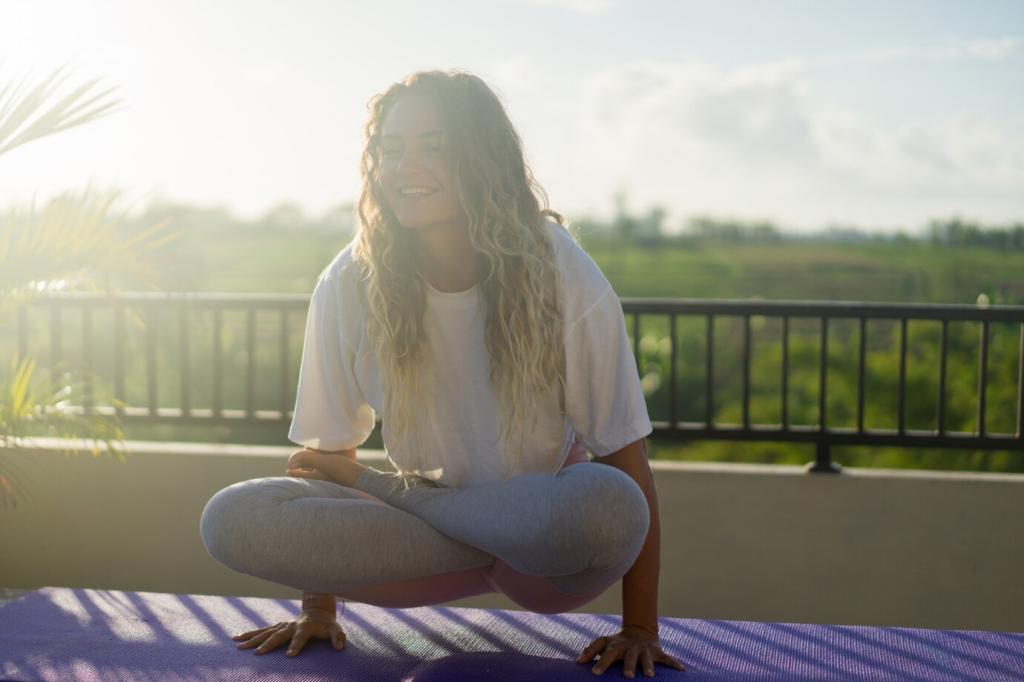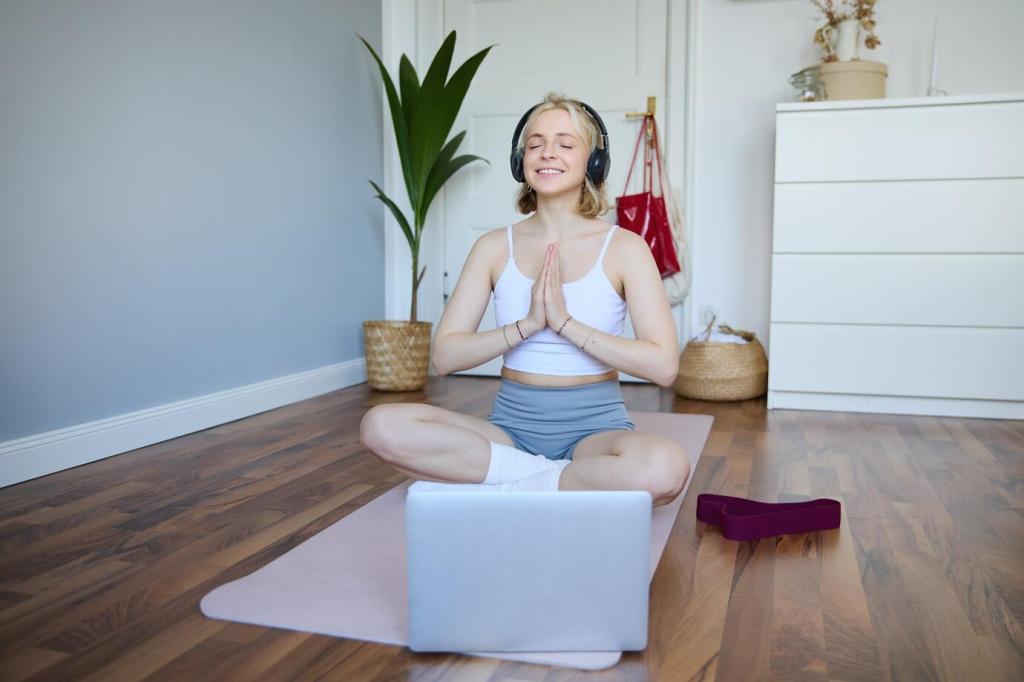Lay the Groundwork: What Mindful Yoga Means at Home
Perfection is loud, presence is quiet. Begin by noticing your feet on the floor and your breath moving your ribs. If a pose feels uneven, linger, soften, and listen. Your practice grows not from achieving shapes, but from consistent attention.
Lay the Groundwork: What Mindful Yoga Means at Home
Protect your joints with generous bends, support your knees with folded towels, and keep movements small and steady. Pain is a clear no; mild sensation is a curious maybe. Treat alignment as support, not a rulebook, and pause whenever breath becomes strained.






